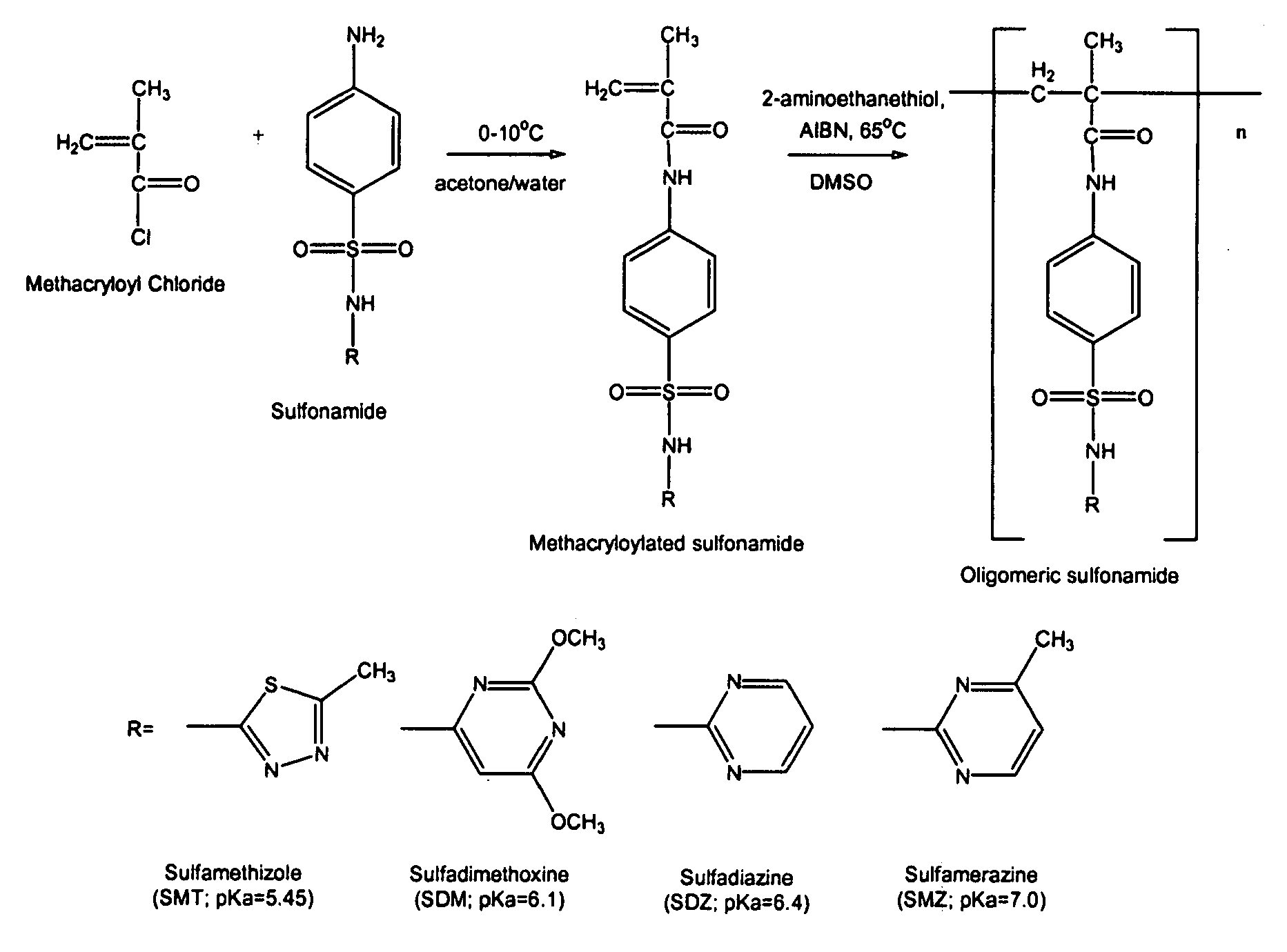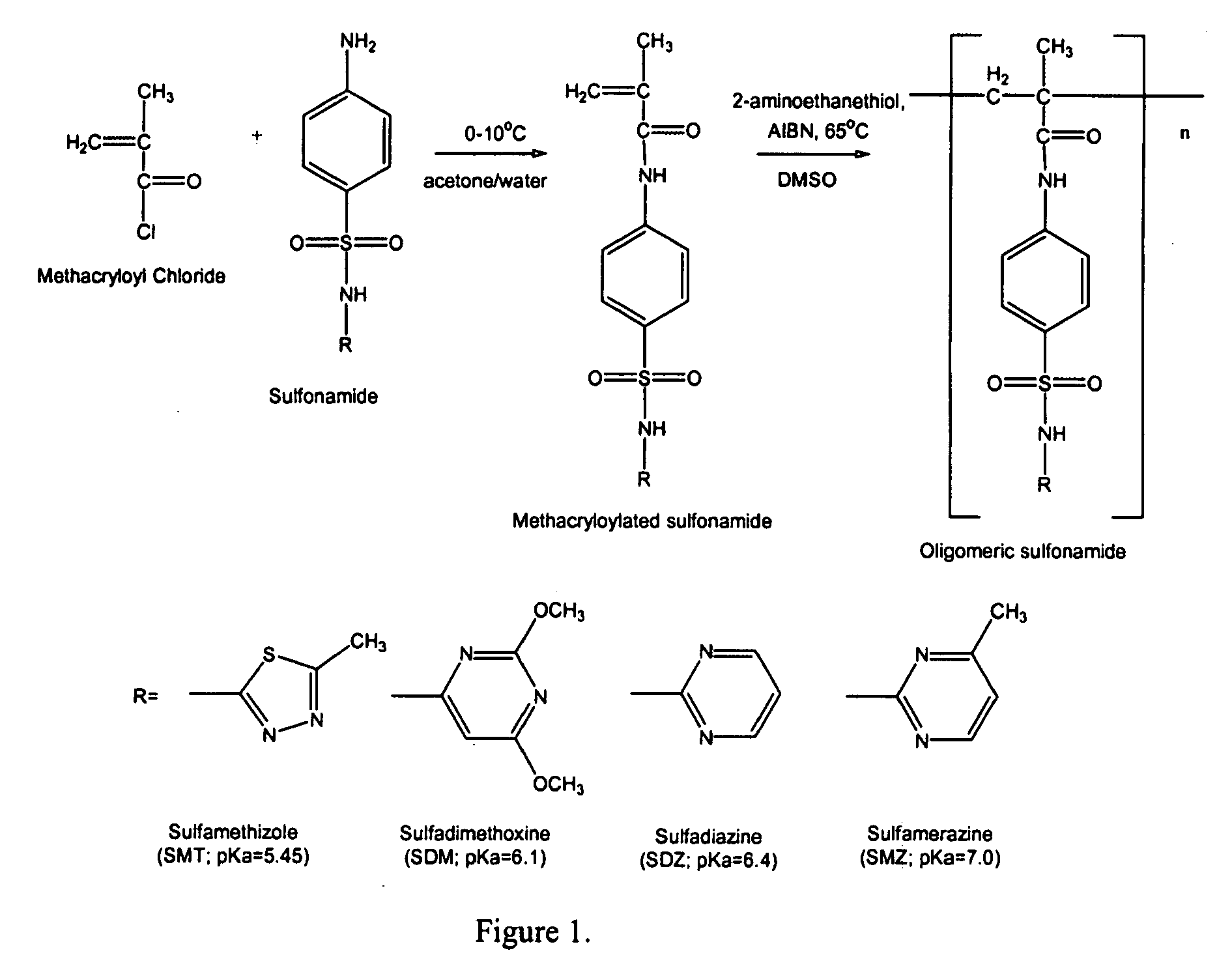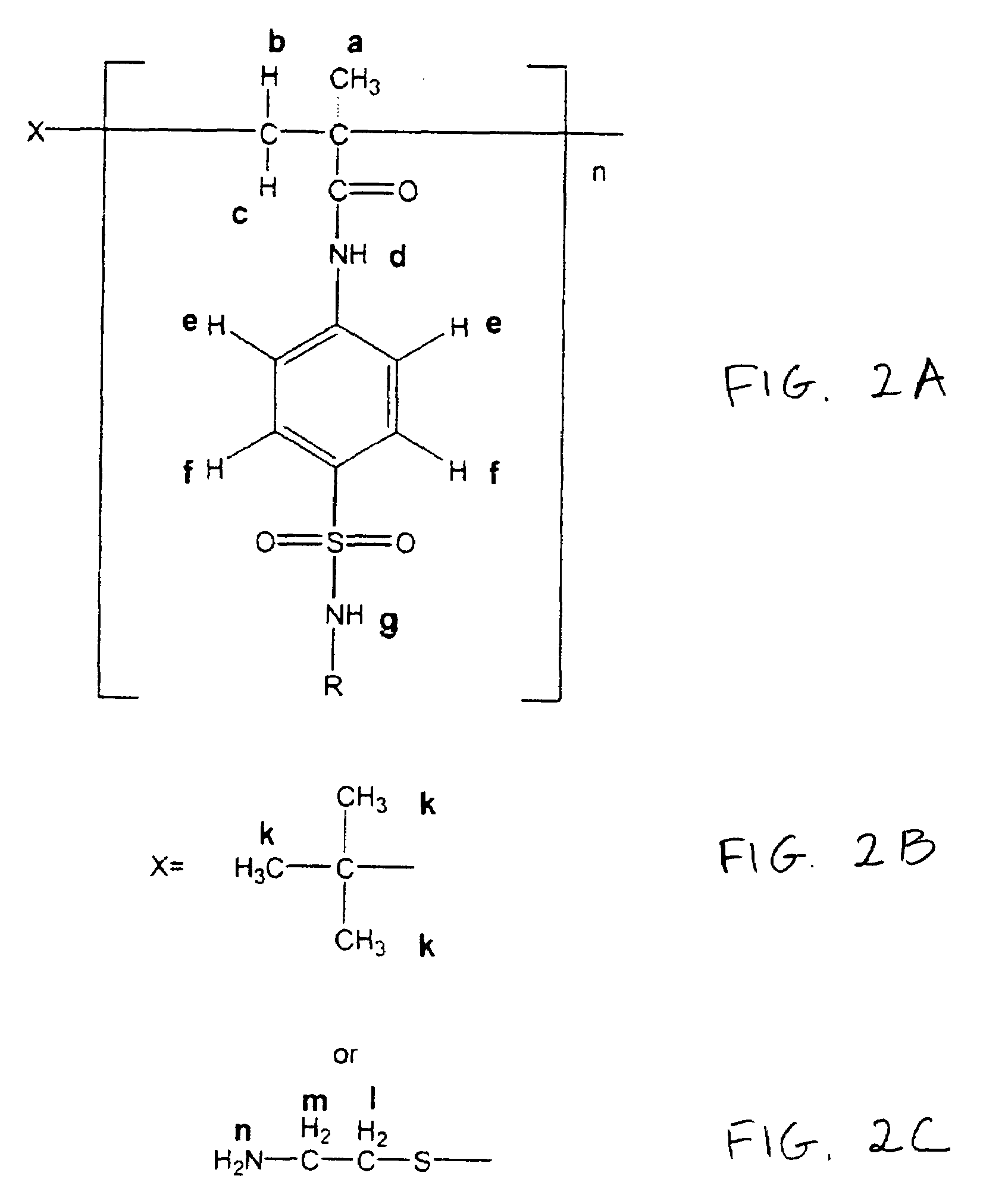Sulfonamide-based oligomers and polymers for destabilization of biological membranes
a technology of biological membranes and polymers, applied in the field of gene delivery, can solve the problems of limited library of paas as endosomolytic polymers, low transfection rate of polymeric vectors in animal models and clinical applications, and limit the application of paas at a specific ph
- Summary
- Abstract
- Description
- Claims
- Application Information
AI Technical Summary
Problems solved by technology
Method used
Image
Examples
example 1
Synthesis of Oligomeric Sulfonamides
[0043]Methacryloylated sulfonamides were prepared as described in S. I. Kang & Y. H. Bae, pH-induced solubility transition of sulfonamide-based polymers, 80 J. Control. Relase 145-155 (2002); S. Y. Park & Y. H. Bae, Novel pH-sensitive polymers containing sulfonamide groups, 20 Macromol. Rapid Commun. 269-273 (1999); S. K. Han, K. Na & Y. H. Bae, Sulfonamide based pH-sensitive polymeric micelles: physicochemical characteristics and pH-dependent aggregation, 214 Colloid Surface A. Physicochem. Eng. Aspects 49-59 (2003). As shown schematically in FIG. 1, a sulfonamide (10 mmol) and NaOH (10 mmol) were dissolved in 40 mL of water-acetone mixture (water:acetone=1:1 (v / v)). Then, methacryloyl chloride (10 mmol) was slowly added into the sulfonamide solution in an ice-water bath (0-5° C.) with vigorous stirring. A condensation reaction between the methacryloyl chloride and the sulfonamide was carried out for 1 hr. NaOH acted as a scavenger of HCl generat...
example 2
Acid-Base Titration and Solubility Transition
[0048]Basic oligomeric sulfonamide solutions and PPAA solution were titrated with 0.1 N HCl for determination of proton buffering capacity and solubility transition against pH. Oligomeric sulfonamides (10 mg) prepared according to the procedure of Example 1 were dissolved in 150 mM NaCl aqueous solution (10 mL) with 100 μL of 1 N NaOH. A 3-mL aliquot was titrated with 0.1 N HCl at RT. Control solutions of PPAA and NaCl were similarly titrated. The changes of pH and transmittance (%) were monitored. Transmittance (%) was evaluated at 500 nm by a multi-modal microplate reader (SpectraMax M2; Molecular Devices, Sunnyvale, Calif.).
[0049]The proton-buffering capacity and pH-dependent solubility of transition of oligomeric sulfonamides was monitored by pH-titration and % transmittance measurements, respectively. As shown in FIG. 3A, addition of acid to oligomeric sulfonamide solutions (basic pH) showed buffering effect around pH 8, most probabl...
example 3
Hemolytic Activity
[0050]The hemolytic activity of oligomeric sulfonamides was investigated in pH-dependent tests. One SD rat was killed with isoflurane, and blood was obtained by cardiac puncture. Blood, collected in EDTA-containing tubes, was centrifuged at 1500 g for 15 min. The pellet washed three times with cold DPBS pH 7.4 by centrifugation at 1500 g for 15 min at 4° C. and resuspended in the same buffer. An oligomeric sulfonamide solution was added to the erythrocyte solution (107 cells / mL) at different pHs (pHs 4.5, 5.5, 6.5, and 7.4) and was incubated for 60 min at 37° C. in a shaking water bath. The final concentration of the oligomeric sulfonamide solution was 20 μg / mL. The release of hemoglobin was determined after centrifugation (1500 g for 10 min) by photometric analysis of the supernatant at 541 nm. Complete hemolysis was achieved using 2% Triton X-100, yielding the 100% control value, and 0% hemolysis was deemed the value measured with DPBS buffer-treated erythrocyte ...
PUM
| Property | Measurement | Unit |
|---|---|---|
| pKa | aaaaa | aaaaa |
| pKa | aaaaa | aaaaa |
| mol % | aaaaa | aaaaa |
Abstract
Description
Claims
Application Information
 Login to View More
Login to View More - R&D
- Intellectual Property
- Life Sciences
- Materials
- Tech Scout
- Unparalleled Data Quality
- Higher Quality Content
- 60% Fewer Hallucinations
Browse by: Latest US Patents, China's latest patents, Technical Efficacy Thesaurus, Application Domain, Technology Topic, Popular Technical Reports.
© 2025 PatSnap. All rights reserved.Legal|Privacy policy|Modern Slavery Act Transparency Statement|Sitemap|About US| Contact US: help@patsnap.com



